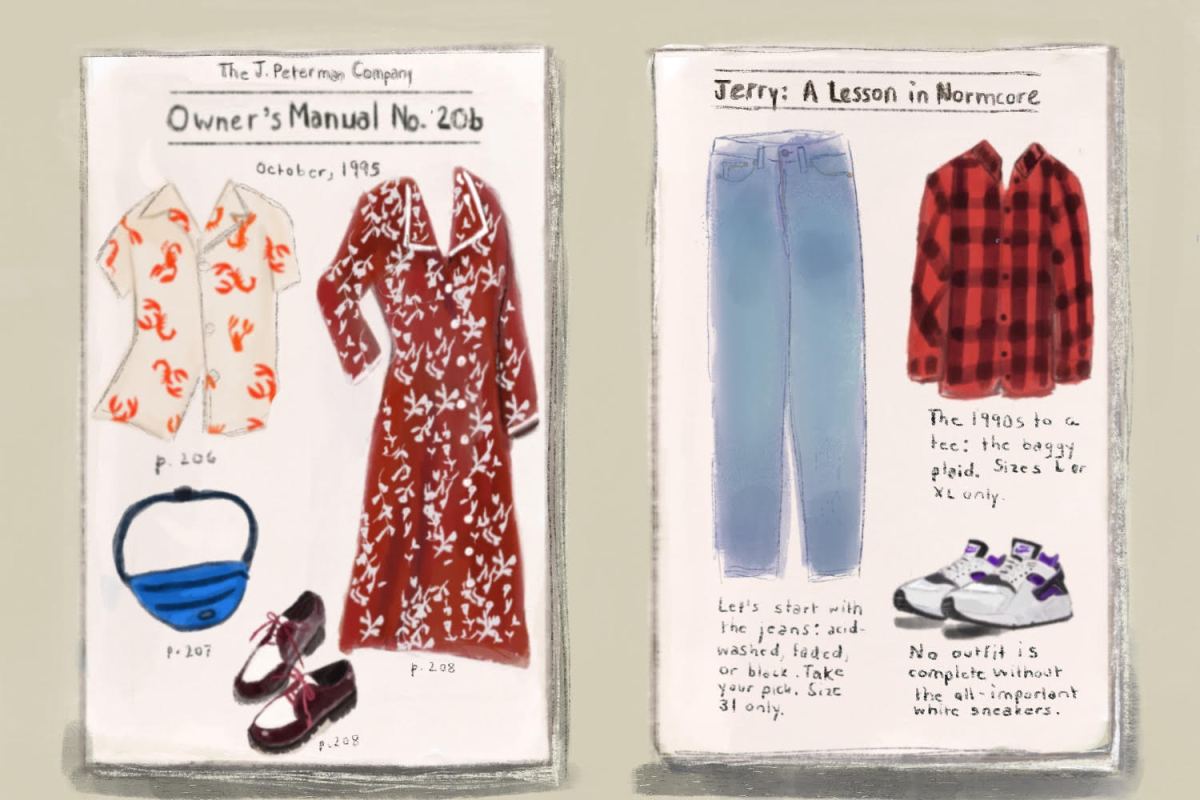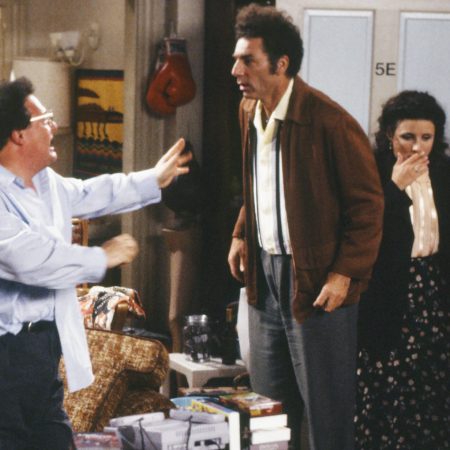Thirty years ago this month, a sitcom about a quartet of New Yorkers made its debut on NBC. The “show about nothing” went on to become one of the most iconic television shows of all time. To celebrate three decades of George, Elaine, Kramer and Jerry, InsideHook will be sharing stories about the show’s lasting impression on fashion, comedy and American culture all week. To kick things off, the past, present and future of the real-life catalog that Julia Louis-Dreyfus’s character worked for, J. Peterman.
It started with a coat.
Specifically: a horseman’s duster John Peterman bought in Jackson Hole, Wyoming, brought to New York City in 1986, as Peterman and his longtime friend and collaborator Don Staley were plotting their next business move. The coat was a wonder to behold: “It was cut very long, all the way to the floor, similar to the ones in the 1880s,” wrote Peterman in Peterman Rides Again: Adventures Continue with the Real “J. Peterman” Through Life & the Catalog Business, his 2000 autobiography.
“And there’s always this great story my dad tells,” says Matt Peterman, John’s son and now the catalog’s Creative Director, “about how he walked into Don’s apartment in New York City wearing the coat. And Don looked at him and said, you know Peterman, I like you better in that coat.”
With the duster as their first offering, Peterman and Staley placed an ad in a 1987 issue of The New Yorker — Staley wrote the lyrical copy — and the pair sold 70 coats. At that moment, the J. Peterman Company was born.
The official catalog launched in 1988, and it quickly became as famous for what wasn’t in it as for what was: no pictures, for one (the Peterman clothes have always been rendered in the catalog by artists, though product photography did begin to appear in a limited capacity on the website last year). The text, initially written by Staley and later by a small team of copywriters now managed by Matt Peterman, was inspired by Peterman’s around-the-world adventures and the legendary Lost Generation writers of the 1920s.
“Before I was even involved in the company,” says Matt Peterman, “I went on a trip with my dad to Europe. It was my first trip abroad and he gave me a copy of Hemingway’s A Movable Feast.”
The words, then, became just as important as the clothes themselves: “Peterman has always tried this sort of authentic, romantic clothing and it’s not that it necessarily makes you a different person, but it draws a real sense of emotion out.”
It is, of course impossible to talk about J. Peterman without talking about Seinfeld. The show’s version of Peterman was a caricature of an Indiana Jones-style adventurer, ready at a moment’s notice to take off for the Panamanian jungle or spend a $29,000 on a slice of cake from the wedding of King Edward VIII to Wallis Simpson.
The real John Peterman might be more down to earth than his fictionalized counterpart (though the relationship between the show and the company was always a good one: actor John O’Hurley, who played Peterman on Seinfeld, was actually an investor in the 2001 relaunch of the J. Peterman Company), but the role of storytelling in the catalog is still an important one.
In a move largely unique to J. Peterman, each writer actually gets their assigned items in the mail before they start working on the copy, almost as though the clothing becomes a kind of physical writing prompt. Matt Peterman estimates the company uses between two and four for each edition of the catalog, plus a handful of artists.
“If you’re going to write about something, you should have the item, you should be able to put it on, should be able to feel it,” says Matt. “If you’re selling some cashmere, or you’re selling a really nice cotton, you can’t really get that from a picture. You’ve got to look at, and to feel it.”
Equally as important is the background information writers get on each piece. “If the merchandisers were sifting through some vintage store in Paris, dust flying everywhere, throwing off all this junk to find that one great piece of material, then you want to know that stuff.”
History, too, inspires the J. Peterman team. On the site right now is the Old Money Velvet Coat, whose copy tells the story of the murder of architect Stanford White, and the Romanian Freedom Shirt, which transports readers and shoppers to the heart of 1989 Bucharest.
Peterman has always tried this sort of authentic, romantic clothing and it’s not that it necessarily makes you a different person, but it draws a real sense of emotion out.
While the duster is still one of J. Peterman’s most iconic products, the company has also moved into simple shirts and suiting, and those items, too, are rendered in their signature literary voice. “I think what we’ve always tried to fall back on with Peterman is, okay, if we’re going to sell a plain white T-shirt, we’re going to try to make it as different as possible,” says Matt Peterman. “It’s the T-shirt that your grandfather wore that lasted for 25 years.”
And while John Peterman himself was and continues to be the inspiration for a number of the catalog’s products, they also take inspiration from the great characters of American literature, though not without some hiccups, says Matt Peterman. “We have a shirt called the Gatsby shirt, which by the way, we just had to change the name after 30 years. We have been running that copy for 30 years or close to it — it was one of the original items! And we just found out I had to go through the copy and sort of de-Gatsby it, which is pretty funny.”
It’s this commitment to storytelling that, decades after its first catalog went to print, keeps the J. Peterman brand alive. They’re selling not just the chance to wear special new clothes, but also to be the special kind of person who wears them. The J. Peterman catalogue isn’t for everyone, and that’s its appeal. Like Matt Peterman says: “It’s the power of clothing, and it’s the power of a good story.”
This article was featured in the InsideHook newsletter. Sign up now.
























